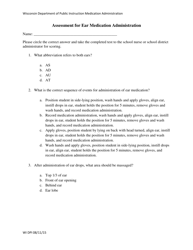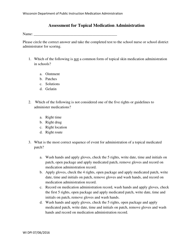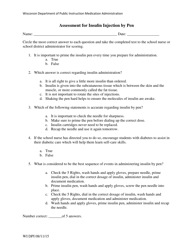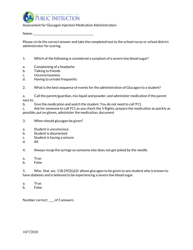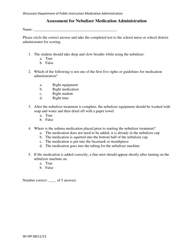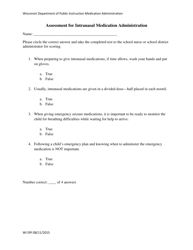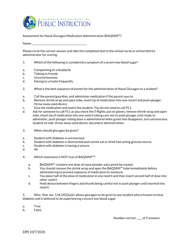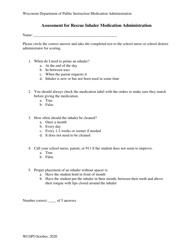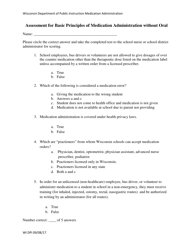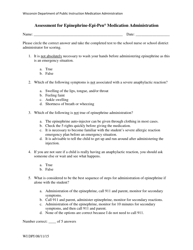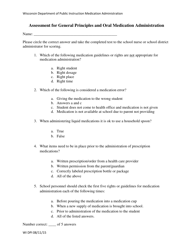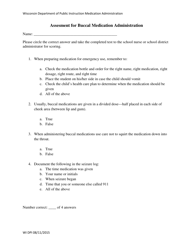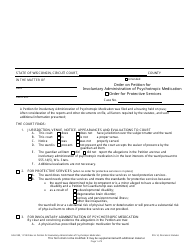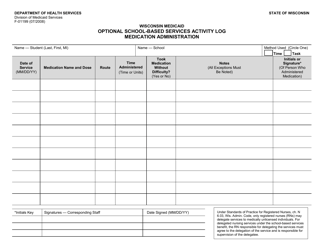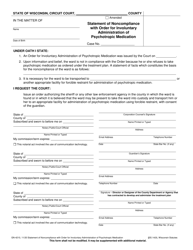Assessment for Injections Medication Administration - Wisconsin
Assessment for Injections Medication Administration is a legal document that was released by the Wisconsin Department of Public Instruction - a government authority operating within Wisconsin.
FAQ
Q: What is an injection?
A: An injection is a method of delivering medication into the body using a needle and syringe.
Q: Why are injections used for medication administration?
A: Injections are used when medications need to be rapidly absorbed into the bloodstream or when oral administration is not possible.
Q: What are the different types of injections?
A: There are several types of injections, including intramuscular (IM), subcutaneous (SC), and intravenous (IV).
Q: What is an intramuscular injection?
A: An intramuscular injection is when medication is injected into a muscle, typically in the upper arm, thigh, or buttock.
Q: What is a subcutaneous injection?
A: A subcutaneous injection is when medication is injected into the fatty tissue just below the skin.
Q: What is an intravenous injection?
A: An intravenous injection is when medication is injected directly into a vein.
Q: Are there any risks or side effects associated with injections?
A: Common risks or side effects of injections include pain, swelling, bruising, or infection at the injection site.
Q: Who can administer injections?
A: Injections are typically administered by healthcare professionals such as doctors, nurses, or pharmacists.
Q: Do I need special training to administer injections at home?
A: Yes, if you are administering injections at home, you should receive proper training from a healthcare professional.
Q: Is it safe to reuse needles or syringes?
A: No, it is not safe to reuse needles or syringes. They should be properly disposed of after each use.
Form Details:
- Released on August 4, 2016;
- The latest edition currently provided by the Wisconsin Department of Public Instruction;
- Ready to use and print;
- Easy to customize;
- Compatible with most PDF-viewing applications;
- Fill out the form in our online filing application.
Download a printable version of the form by clicking the link below or browse more documents and templates provided by the Wisconsin Department of Public Instruction.


